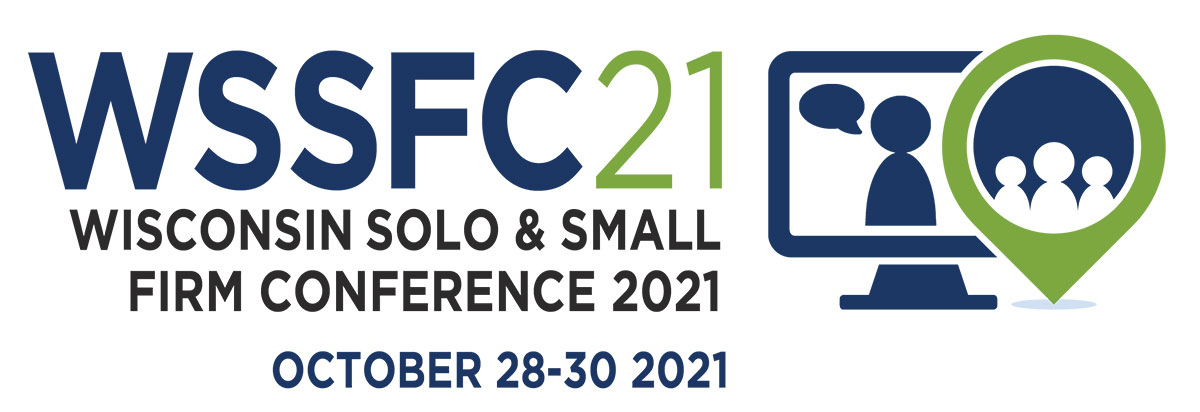Sept. 1, 2021 – Proper business succession planning requires a strategy to be in place to address expected and unexpected events.
To remain diligent, lawyers should understand the Wisconsin Supreme Court Rules regarding lawyer succession, sale of a law firm, and client communications.
In this video, State Bar of Wisconsin Law Practice Assistance Manager Christopher C. Shattuck and Dean R. Dietrich, past chair of the State Bar Professional Ethics Committee, discuss best practices for lawyer succession planning.
Rule: Diligence
Paragraph [5] of the ABA comment to Supreme Court Rule 20:1.3 states:
To prevent neglect of client matters in the event of a sole practitioner's death or disability, the duty of diligence may require that each sole practitioner prepare a plan, in conformity with applicable rules, that designates another competent lawyer to review client files, notify each client of the lawyer's death or disability, and determine whether there is a need for immediate protective action.
A variety of resources have been published to assist lawyers in complying with this guidance. After All, You Are Only Human: The Solo Practitioner’s Handbook for Disability and Death, created by the State Bar of Wisconsin Solo/Small Firm & General Practice Section in 2013, provides planning recommendations, and includes sample forms and checklists.
Solo practitioners can also use the State Bar’s Succession Planning Registry1 to name their successor. Another helpful resource providing an in-depth examination of succession planning considerations is the March 2018 Wisconsin Lawyer™magazine article, Lawyer Death or Disability: Who Will Protect Your Clients?
Rule: Client Protection
Supreme Court Rule (SCR) Chapter 12 covers scenarios involving an attorney’s death or disappearance without compliance with license suspension or revocation order and the death, disappearance, or medical incapacity of sole practitioners.
 Christopher C. Shattuck, Univ. of La Verne College of Law 2009, M.B.A. U.W.-Oshkosh 2015, is manager of Practice411™, the State Bar’s law practice assistance program. If you have questions about the business aspects of your practice, call (800) 957-4670.
Christopher C. Shattuck, Univ. of La Verne College of Law 2009, M.B.A. U.W.-Oshkosh 2015, is manager of Practice411™, the State Bar’s law practice assistance program. If you have questions about the business aspects of your practice, call (800) 957-4670.
The rule allows for “a judge of a court of record in a county in which the attorney maintained an office” to “appoint an attorney to enter the former offices of the attorney or other location as may be necessary for the sole purpose of protecting clients' rights, files and property and delivering the files and property to the clients or to their successor counsel.”
The appointment or petition requirements vary depending on the initial need for client protection. However, in general, an appointed attorney may be compensated out of the assets from the attorney requiring a successor, may be eligible to be a purchaser of the law practice and, if no purchase takes place, is responsible for handling the orderly transition of client matters.
Petitioning or accepting a Chapter 12 appointment has several requirements and it is important for attorneys to understand the rules before agreeing to step in and help out.
The Solo Practitioner’s Handbook for Disability and Death
Attorneys seeking to avoid court appointments under Supreme Court Rule Chapter 12 can follow suggested best practices in the After All, You Are Only Human: The Solo Practitioner’s Handbook for Disability and Death by having an alternative succession plan in place.
At the very least, the successor attorney should have access to:
locations of financial accounts, account numbers, passwords for online access;
insurance carrier(s) information;
directions for accessing computer software; and
information about monthly bills.
It is also recommended that the attorney and successor attorney annually discuss the succession plan, perform a dry run to ensure the plan sufficiently addresses common questions, and that interested parties are aware of the arrangement in order to avoid confusion or disagreement regarding the succession plan.
Don’t Miss CLE Sessions ‘Practical Considerations for Transitions’ Parts I and II
Co-produced by State Bar of Wisconsin PINNACLE® and the State Bar Senior Lawyers Division, these two on demand, one-hour CLE seminars can help you in transitioning your practice:
Rule: Selling a Law Firm and the Prohibition of Practice
The most common mistake in selling a law firm typically occurs after the sale of the firm when the selling lawyer or law firm learns about the prohibition of practice rule.
SCR 20:1.17(a) requires that the, “seller ceases to engage in the private practice of law, or in the area of practice that has been sold, in the geographic area or in the jurisdiction in which the practice has been conducted.”
Attorneys who are aware of the prohibition of practice rule after the sale of a law firm will typically negotiate a merger that does not fall under the provisions of SCR 20:1.17.
Purchasers and sellers of firms must also understand that the client retains the right to terminate the firm if they are not pleased with the newly formed law firm, as explained in Paragraph [9] of the ABA Comment to the rule.
Rule: Communication
The communication rule found in SCR 20:1.4 requires an attorney to keep the client updated on matters that may impact the representation. Attorneys planning on transitioning from practice should have communications with their clients regarding timelines, expectations, and the opportunities for the client in moving forward. Finally, transitioning lawyers must understand and communicate scenarios that will involve fee sharing.2
Conclusion: Where to Find Resources
If you do not have a succession plan in place or have not reviewed your succession plan within the last year, consider using the cited complimentary resources and Supreme Court Rules to craft your law firm’s succession plan.
If you have additional questions, complimentary and confidential ethics and practice management consultations are available to you as a State Bar member.
Get Transitioning Tips from Wisconsin Solo & Small Firm Conference

Learn more about transitioning your practice at the 2021 Wisconsin Solo & Small Firm Conference (WSSFC), Oct. 28-30. Look for these sessions:
Legal Malpractice Coverage for Lawyers in Transition – Thursday, Oct. 28 at 3:10 p.m.
Attorneys frequently change jobs and career paths multiple times after graduating from law school. This program will help lawyers understand and protect against any potential uncovered legal malpractice exposure when making a transition in their practice.
Building a Business for Transition – Friday, Oct. 29 at 10 a.m.
This session helps you assess your business needs to withstand transitions without chaos ensuing. Whether your business transitions through succession, merger, or separation, you’ll be prepared for a smoother process.
Endnotes
1 See How to Use the New Law Practice Succession Planning Registry, InsideTrack, Mar. 21, 2018.
2 See Wisconsin Formal Ethics Opinion EF-10-02: Ethical Responsibility of Lawyers When Referral Fees are Received.
